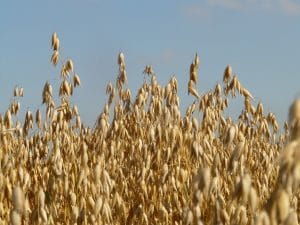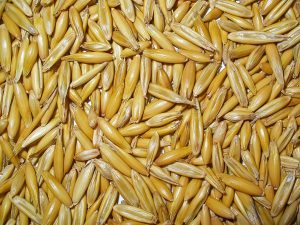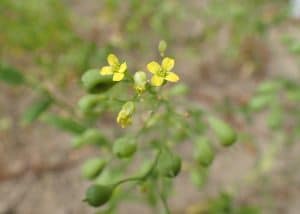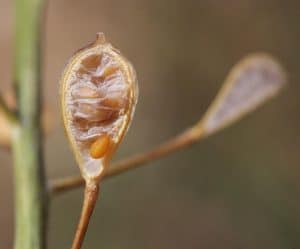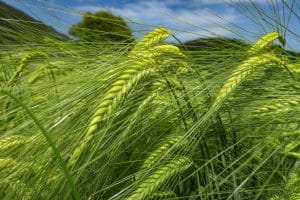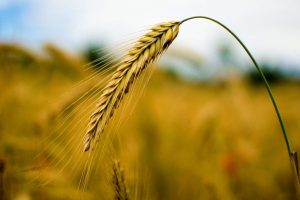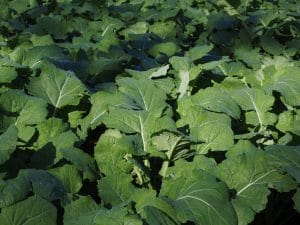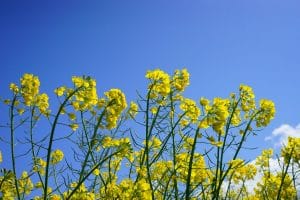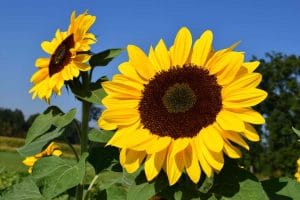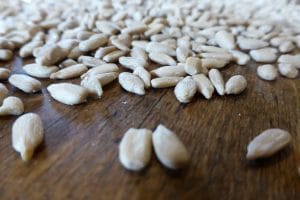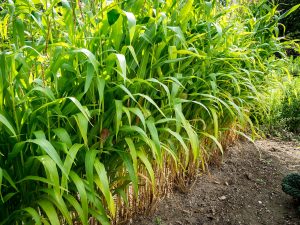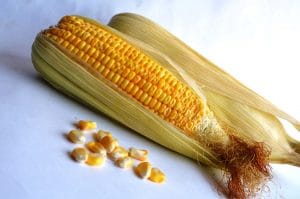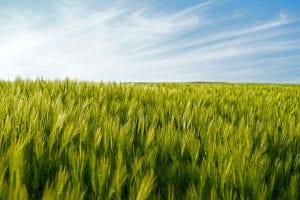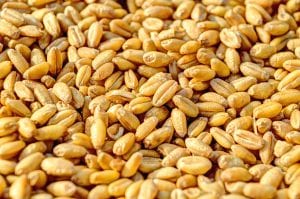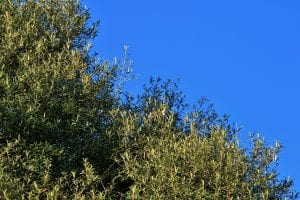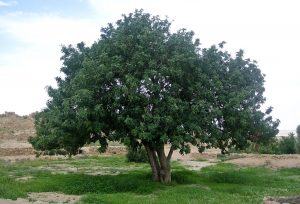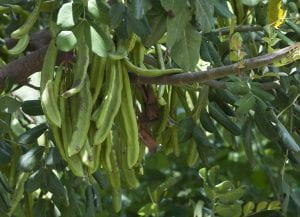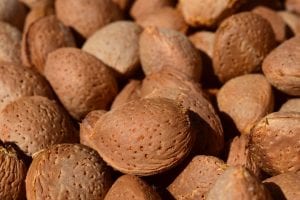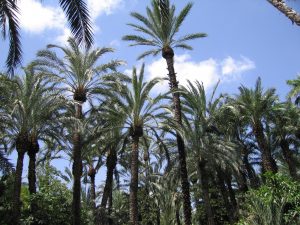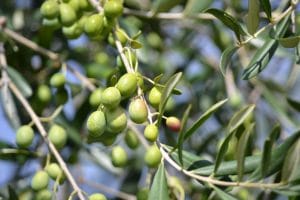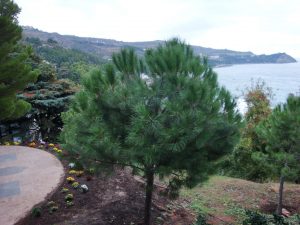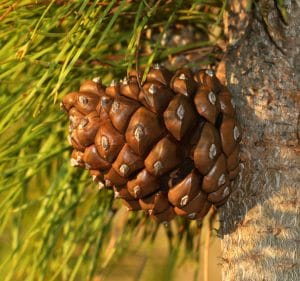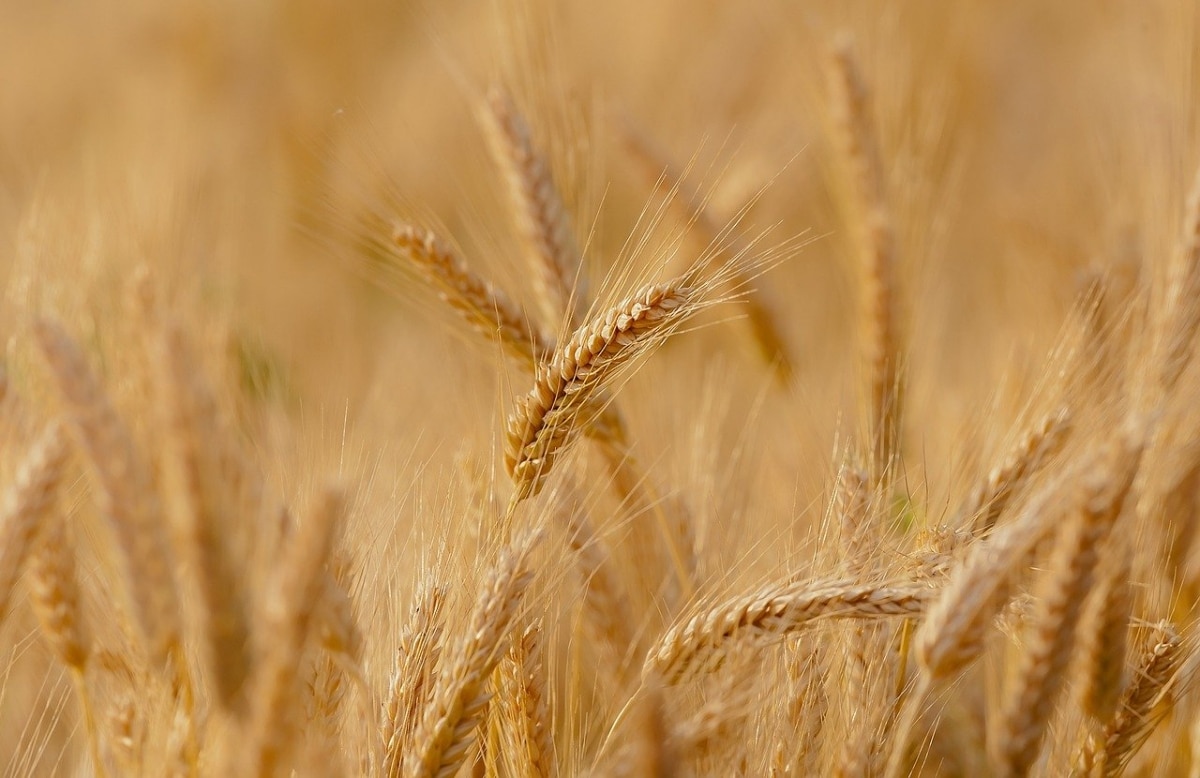
When rain is scarce, farming is not necessarily unfeasible. In regions where it rains little, they have adapted to local conditions for centuries. And it is that, as anyone who has agriculture "in his veins" will be able to tell you: it is better not to fight against the climate. This means that choosing native plants, or failing that those that live in similar conditions, will make cultivation much easier.
So if you want to know what are the best rainfed crops, and what uses each of them have, let's see it next.
Rainfed herbaceous crops
Often they are the ones that are cultivated the most, since although there are many that live for a few months, being relatively small they allow a lot and very good use of any space. In this group we have:
Oats (Avena sp)
- Image - Wikimedia / H. Zell
Oats are an annual herb with stems up to 50 centimeters tall. The best known species, and therefore the most cultivated, is the Avena sativa. Although it is used more as fodder, humans also use it as a food plant, especially in drinks and flakes for breakfast.
Camelina (camelina sativa)
- Image - Wikimedia / Krzysztof Ziarnek, Kenraiz
- Image - Wikimedia / Marie PORTAS
Camelina is a herb that can be annual or biennial depending on the climate (if it is warm, it will live for about two years, but only one). It grows between 30 and 80 centimeters tall, and has little flowers that sprout from flower stalks. Its seeds are very rich in omega 3 fatty oils, so its use is as edible oil.
Barley (vulgar hordeum)
La barley It was one of the cereals preferred by the ancient Egyptians, but today it is still widely cultivated. In fact, more than 100 million tonnes are produced every year around the world. And it is that this annual herb, with an approximate height of 80 centimeters, It is used as an edible, either as a cereal or to make alcoholic beverages.
Rapeseed (Brassica)
Rapeseed is an annual or biennial herb that develops stems up to 150 centimeters tall, and produces yellow flowers in spring. It is used as fodder, biodiesel and as edible oil, but we must be careful if we buy rapeseed oil because it contains erucic acid, it can be toxic in high doses.
Sunflower (Helianthus annuus)
El sunflower It is an annual herb that can live with relatively little water once it has rooted in the ground. It develops a more or less tall stem, between 50 to 300 centimeters, and during the summer it produces an inflorescence that we call in the center of which the seeds (pipes) will ripen. The latter are edible; in fact, they are consumed as dried fruit and as oil, the sunflower oil that we use for cooking. It is also useful in making paper.
Corn (zea mays)
- Image - Wikimedia / Plenuska
El corn It is one of the most important cereals in the world, and one of the first to be domesticated some 9 thousand years ago. It was made in what we know today as Mexico, and it arrived in Europe thanks to the colonizers who went to America. It is a grass that reaches more or less five meters in height, and has characteristic lanceolate leaves. It is used as an edible cereal, for example in salads or in breads.
Wheat (Triticum sp)
El wheat It is an annual herb which, according to remains found, is believed to have been domesticated around 6700 BC. C., in ancient Mesopotamia. The plant is very similar to corn, although it has shorter roots and stem. Its maximum height is 2 meters. Its use is edible: we find it in breads, drinks, industrial food. It is also used in animal feed.
Woody rainfed crops
Woody crops are very interesting: we are not only talking about plants that resist drought, but also those that, depending on their size, can provide us with shade. And it is that shade is a precious asset in areas where it rains little, since the dry season usually coincides with the warmest: summer. Therefore, let's see what they are:
wild olive (Olea europaea var sylvestris)
El wild olive It is a tree, or rather a large evergreen shrub, that grows to 4-5 meters in height. It has a wide crown, which branches a short distance from the ground. It is not as popular as the olive tree, but its fruits are also eaten fresh. On the island of Mallorca, for example, they are usually served to snack on small plates.
Carob (Ceratonia siliqua)
- Image - Wikimedia / Zeynel Cebeci
El carob tree It is a tree, also evergreen, that grows up to 6 meters. It has a wide crown and a trunk that tends to lean over the years. Its fruits, the siliquas, are pods that are used as edible, but also as fodder.
Almond tree (Almond)
- Image - Wikimedia / Libero12 at Italian Wikipedia
El almond It is a deciduous tree or sapling that, although it can lose its leaves before autumn if the summer has been especially dry, it is a plant that is widely cultivated in the Mediterranean, for example, since it does not need much water. It produces a fruit that we know as almond, which can be consumed fresh (removing the shell), or make drinks or desserts with it.
Date (Phoenix dactylifera)
- Image - Flickr / Pablo Sanchez Martin
La date It is one of the palm trees that best resists drought. It reaches a height of up to 30 meters, and tends to develop multiple trunks. The leaves are pinnate, bluish-green in color, and towards summer it produces a large number of fruits: dates. These they are consumed dry and canned.
Olive (Olea europaea)
El olive It is an evergreen tree with a maximum height of 15 meters. It has a wide crown, and a long life expectancy (exceeds 200 years). Olives are very interesting: they can be eaten raw, or in foods such as pizzas and the like.. Olive oil is also made with them, which is used for cooking.
Stone pine (Pinea pine)
- Image - Wikimedia / GPodkolzin
- Image - Flickr / S. Rae
El stone pine It is an evergreen conifer that grows up to 50 meters in height, although in cultivation it is difficult for it to exceed (and be allowed to exceed) 10 meters. It is a very rustic plant that resists drought and high temperatures. What's more, produces pine nuts, which are used in confectionery or as garnish.
Do you know other rainfed crops?
